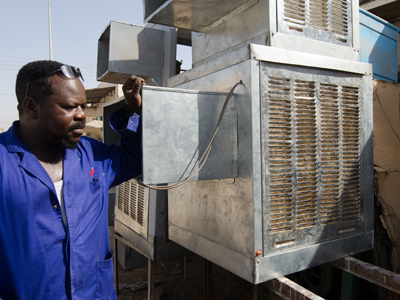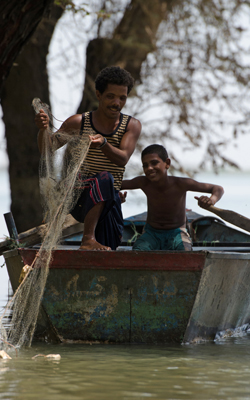Research Brief
A Systematic Review of the Impact of Microfinance on Poverty
-
Microfinance evaluations reveal a positive impact on per capita income,
non-land asset value and poverty incidence. -
Across countries and methodologies, microfinance is most likely to have a
short-term positive effect; regionally, the most positive impacts are seen in
Africa. - Women tend to benefit the most from microfinance.
-
Better off households tend to benefit more from microfinance initiatives
than poorer ones.
Since its institutionalization about 35 years ago, microfinance has been promoted and supported by foreign aid as an innovative tool against poverty and vulnerability. Microfinance has proved not only to allow the poor to access credit, but because it often relies on group-lending also encourages peer sharing while reducing transaction costs to the lender by achieving economies of scale. Although microfinance has been examined under various socio-economic conditions, there is no consensus on the impact it has had on poverty reduction. Given this, it is important to review the available literature to assess whether any clear conclusions can be drawn about the impact microfinance on poverty.

Assessing microfinance’s impact on poverty
It remains difficult to establish clear, robust and incontestable evidence of microfinance’s impact on poverty and well-being: Reported impact varies greatly across countries and also by research design, with findings even conflicting in some cases. There are three main quantitative research designs used to assess the impact of microfinance on poverty. First non-experimental methods measure impacts on treatment and control groups without random assign to treatment of a particular population. Second, quasi-experimental methods compare the outcomes of an intervention with a simulation of what would have happened had there been no intervention. Third randomised experimental designs which allow for more robust causal inference by the virtue of randomisation of both treatment and control beneficiaries. It is important to take a broad look at experimental and quasi-experimental studies on microfinance in order to understand what these different methods can tell us about its effectiveness.

The impact of microfinance on poverty
Using the data obtained from a number of quantative academic studies on microfinance it is possible to examine the reported impact of microfinance on the following poverty dimensions: income and non-food expenditures; food consumption, children’s education, health outcomes, asset and poverty incidence.
After examining the impact of microfinance on each of these poverty dimensions, it is clear that microfinance has a significant positive impact on per capita income, non-land asset value and poverty incidence. Microfinance fails, however, to engender positive change on other poverty dimensions, namely non-food expenditures, per capita monthly and daily food expenditures, medical expenditures, and livestock . Overall, across countries and methodologies, it seems that microfinance generally has a short-term positive effect on borrowers , but that this effect is not necessarily sustained in the long-term.
In terms of regional differences in impact, microfinance in Africa appears to have a more positive impact on poverty compared to elsewhere. Important trends can also be extrapolated from this analysis: a few impact studies found that the effect of microfinance on households’ poverty and well-being is more likely to be significantly positive in the case of women, as opposed to male borrowers in Asia and South America. This might indicate that lending to women may be more effective when addressing poverty and welfare deprivations, than lending to men.
The impact microfinance has on the poorest households is inconclusive. Some studies indicate that microfinance has had an impact on poor or extremely poor households more than on moderately poor ones. Others indicate that microfinance likely has no effect or negative effects on poor households. If the latter is true, this would imply that the socio-economic condition of households influences the way they use and benefit from access to credit, with better-off households reaping more effectively the benefits from microfinance.
- Focusing microfinance initiatives on lending to women may lead to a greater chance of longterm welfare improvements.
- Policy makers involved in microfinance should consider how poor-households could make the most of any loans they receive.
There are significant differences in the reported impact of microfinance according to the methodology used in the impact studies. This assessment finds that experimental studies unanimously report insignificant and/or significant negative impact of microfinance on all the poverty dimensions and variables considered in this study while reports from quasi-experimental research are more mixed.
 Join the network
Join the network